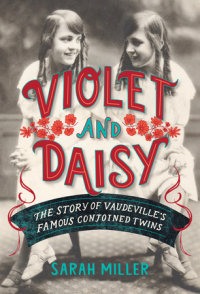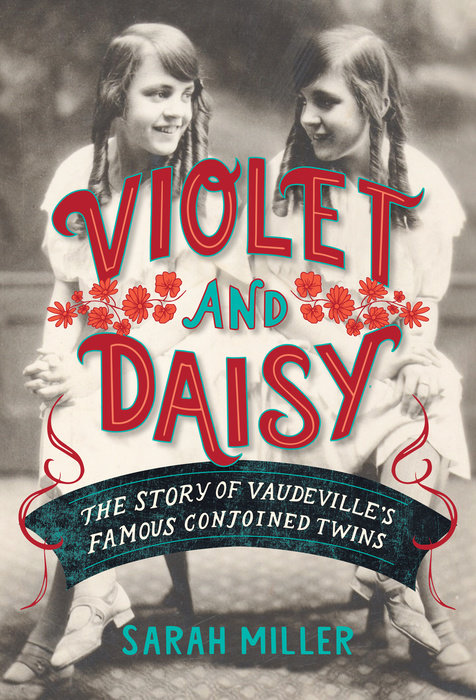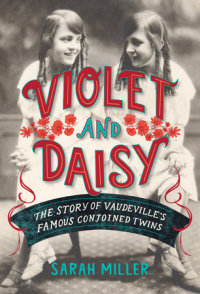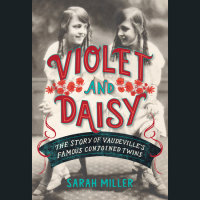Chapter 1
Of course their mother screamed when they were born. She screamed so loudly and for so long on February 5, 1908, the neighbors pounded on the wall to command her to stop. But twenty-one-year-old Kate Skinner could not help but scream. After fourteen hours of unrelenting pain, her baby had not come. It had not even seemed to budge. The midwife, Mary Hilton, began to fear that the unborn infant had died. She ran downstairs and out of the house to call for the doctor.
As if impelled by the midwife’s alarm, the birth suddenly proceeded. For a few minutes, anyway. When the baby was finally halfway born, everything ground to a halt. Something was in the way. Twins, the midwife decided. There were already five sets in the family; Kate herself had been a twin. One baby must have been blocking the path of the other. But how, exactly, Mary Hilton did not know, until out came a pair of feet that could only belong to a second baby. It was as if both…
Chapter 1
Of course their mother screamed when they were born. She screamed so loudly and for so long on February 5, 1908, the neighbors pounded on the wall to command her to stop. But twenty-one-year-old Kate Skinner could not help but scream. After fourteen hours of unrelenting pain, her baby had not come. It had not even seemed to budge. The midwife, Mary Hilton, began to fear that the unborn infant had died. She ran downstairs and out of the house to call for the doctor.
As if impelled by the midwife’s alarm, the birth suddenly proceeded. For a few minutes, anyway. When the baby was finally halfway born, everything ground to a halt. Something was in the way. Twins, the midwife decided. There were already five sets in the family; Kate herself had been a twin. One baby must have been blocking the path of the other. But how, exactly, Mary Hilton did not know, until out came a pair of feet that could only belong to a second baby. It was as if both twins were determined to be born simultaneously--one headfirst and one feetfirst. The headfirst child prevailed. Then came a great deal of unusual twisting and turning until at last, two six-pound baby girls lay squalling on the bed.
That was when the real shrieking began. One look at them, and Kate Skinner writhed and flailed and howled. She struggled so fiercely that Mary Hilton and her twenty-nine-year-old daughter, Alice, could hardly hold Kate still.
The babies were pretty little girls, each with ten perfect tiny fingers and ten perfect tiny toes, the pair of them as alike as two flower buds on a single stem. Kate was not looking at their faces, however, nor their fingers and toes. Instead, she had seen the base of their spines: a raw-looking swathe of flesh that fused the newborn sisters back-to-back.
Conjoined twins, we call them today--a rare type of identical twinning due entirely to a quirk of timing. Usually, identical twins occur when a single egg cell divides in half sometime during the first two weeks after fertilization. The two halves then grow into a pair of complete and genetically identical bodies. If an egg attempts to divide after fourteen days, however, the split will be incomplete, and the resulting bodies remain connected. It may happen at the head, or anywhere along the torso, causing some combination of skin, muscle, bone, and organs to be shared or intertwined.
In 1908, such siblings were better known as Siamese twins, after a pair of world-famous brothers, Eng and Chang Bunker, who were born joined at the chest in 1811 in Thailand, which was then called Siam. As far as most people in the early nineteenth century were concerned, though, the simplest term for such people was freaks or monsters. And that was why Kate Skinner could not stop screaming. According to the teachings of her church, she had committed a sin by conceiving these children out of wedlock, and Kate had no doubt that God had doled out her punishment in the form of these monster-babies.
When Dr. James Rooth arrived, he tried to console Kate. More often than not, twins such as these died soon after birth, he told her. Any shared organs usually were not up to the task of supporting two bodies.
Kate was not comforted. Her shame as an unwed mother had been great before. Now it had doubled, then doubled again. In the eyes of the world her babies were not only bastards, but freaks besides. Nothing and no one could compel her to hold her daughters. She certainly would not nurse them. She would not so much as look at them. She turned her face to the wall and waited for them to die.
But Kate Skinner’s babies did not die.
Chapter 2
Contrary to Dr. Rooth’s prediction, the fact that the Skinner twins were attached to each other affected the newborns’ posture and their movement, but it had almost no effect on the most critical factor: their bodies’ function. The bridge between them was relatively small--a portion of one twin’s left buttock was fused with a portion of the other twin’s right buttock. X-rays would show that their spines were connected in the most minor way possible, ending in a single shared tailbone. The last inch or so of their intestinal system was also joined. One twin’s colon ended in a sort of pouch, which jutted a little sideways to link with her sister’s. That combined inch of rectum ended in a single opening. (In other words, just one extra-long nappy would do for both babies, but it needed changing twice as often.)
Everyone who saw the twins wondered the same thing: Could they be separated? Dr. Rooth had grave doubts. There was no telling what sorts of anomalies might be contained within that fusion, no way to learn how extensively their nervous and circulatory systems might be twined together, for instance. Did they share nerve endings or blood vessels? Could some portion of one twin’s blood travel through the bridge between them and circulate through the other twin’s body? Were there places on that bridge that both babies could feel? Dr. Rooth probed here and there, but he could not find a spot that made the sisters respond in tandem. That was promising, but it did not guarantee that their spinal cords were not somehow braided together, or that the vital fluid bathing the cords did not mingle. Rooth knew that in two other cases of twins with similar anatomy, the fusion of the spinal cords was “much more intimate and extreme” than anyone could have guessed. Slicing into them without understanding such things might very well mean death for at least one twin.
From the day they were born, the twins’ only physical limitation was that they could not lie on their backs or their bellies. It simply wasn’t possible. They had to be placed on their sides. Yet because they were not joined across the full width of their backs, and because the connection was off-center, a small amount of hingelike movement was possible between them; they could lean a little away from each other, into a V shape--very much like a book laid spine up over the arm of a chair.
To Kate’s dismay, her twins not only lived but proved to be “a very healthy, lusty young pair,” who seemed “to possess an uncommonly vigorous life.” They took to their bottles of diluted cow’s milk with noticeable relish, putting on a full pound by the end of the first week.
Still, she would not feed or hold them. She herself would not even eat. At the very least she should give them names, Kate’s mother insisted. Days passed before Kate finally surrendered to her mother’s pleas. As they lay facing her, she labeled the baby on her left-hand side Violet, the right-hand baby Daisy.
Violet and Daisy. A sweet pair of names from a mother who was not willing or able to give them anything else. All Kate wanted was to be rid of them. But how? Orphanages did not welcome illegitimate children, believing they were fated to be as “immoral” as their parents. Adoption seemed Kate’s only hope. But who on earth could be persuaded to adopt a set of “double babies”?
Mary Hilton, of all people, came to Kate’s rescue. It was not the first time, either. After Kate had lost her job at a local greengrocer, Mary Hilton engaged the visibly pregnant young woman to wait tables at her pub, the Queen’s Arms, when no one else would hire her. Never mind that Kate had not worked for pay. She had worked--and gratefully--solely in return for Mary’s promise to deliver her baby free of charge. It was an uneven trade, but Kate did not dare complain. Women in such straits were desperate, and Mary knew it. That was why her bar was so often staffed with young, pregnant women. She used that desperation to extort free labor and long, hard hours from her barmaids, even in the final months of their pregnancies. Raising four daughters of her own despite having been widowed twice before turning forty may have forged Mary into a formidable, resourceful businesswoman, but it had not made her especially sympathetic to others’ suffering.
Now, though, what seemed to be a kindlier side of Mary Hilton was showing itself. Sometime during the first week after the birth, Mary began appearing regularly at the Skinner flat, often with her youngest daughter, Edith, to look in on the babies. Mary and Edith lent a hand in the feedings and diaper changes, providing Kate’s mother and sister with welcome breaks. While Mary sat at Kate’s bedside listening to her woes, Edith doted on Violet and Daisy. For the rest of her life, in fact, Edith would remember the first time those five-day-old babies were placed in her arms. She, more than anyone else, began opening her heart to them.



